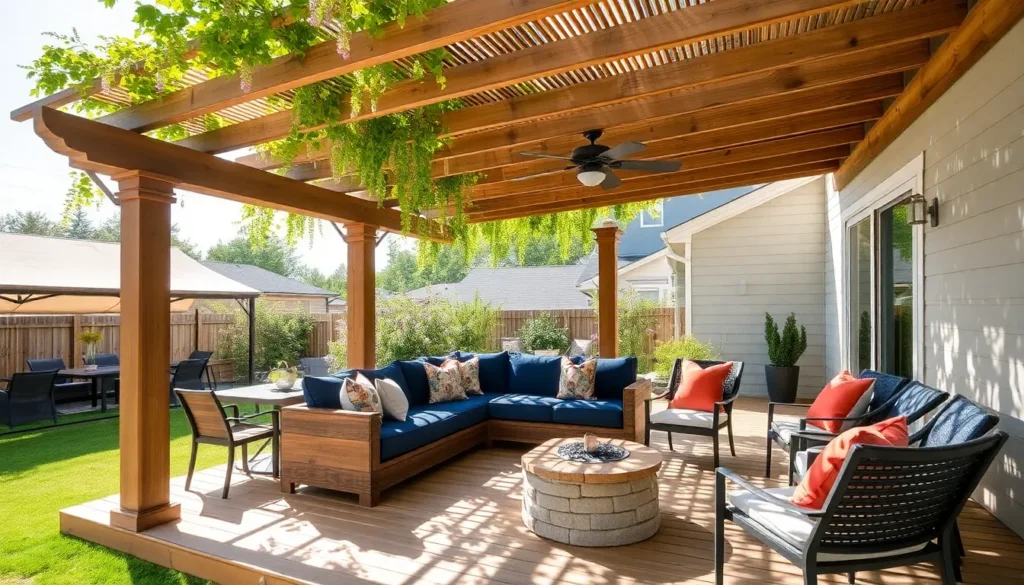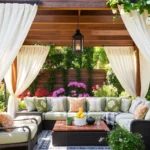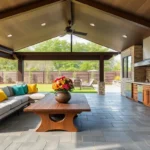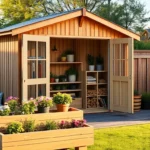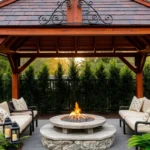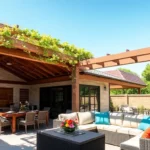Transforming your backyard into a cozy retreat doesn’t need to be a daunting task, whether you’re a seasoned DIY enthusiast or just beginning your journey into outdoor design. Patio covers are the perfect way to blend functionality with style, offering shelter from the elements while creating a welcoming space for relaxation and entertainment. With the right guidance, even the most intricate projects can become manageable and rewarding endeavors.
In this article, we’ll explore ten inventive DIY patio cover ideas that range from simple to sophisticated, ensuring there’s something for every skill level and budget. You’ll discover practical tips and step-by-step guidance to help you craft a shelter that truly enhances your outdoor experience. Let’s embark on this creative adventure together, making your backyard the sanctuary you’ve always envisioned.
Choosing the Right Patio Cover
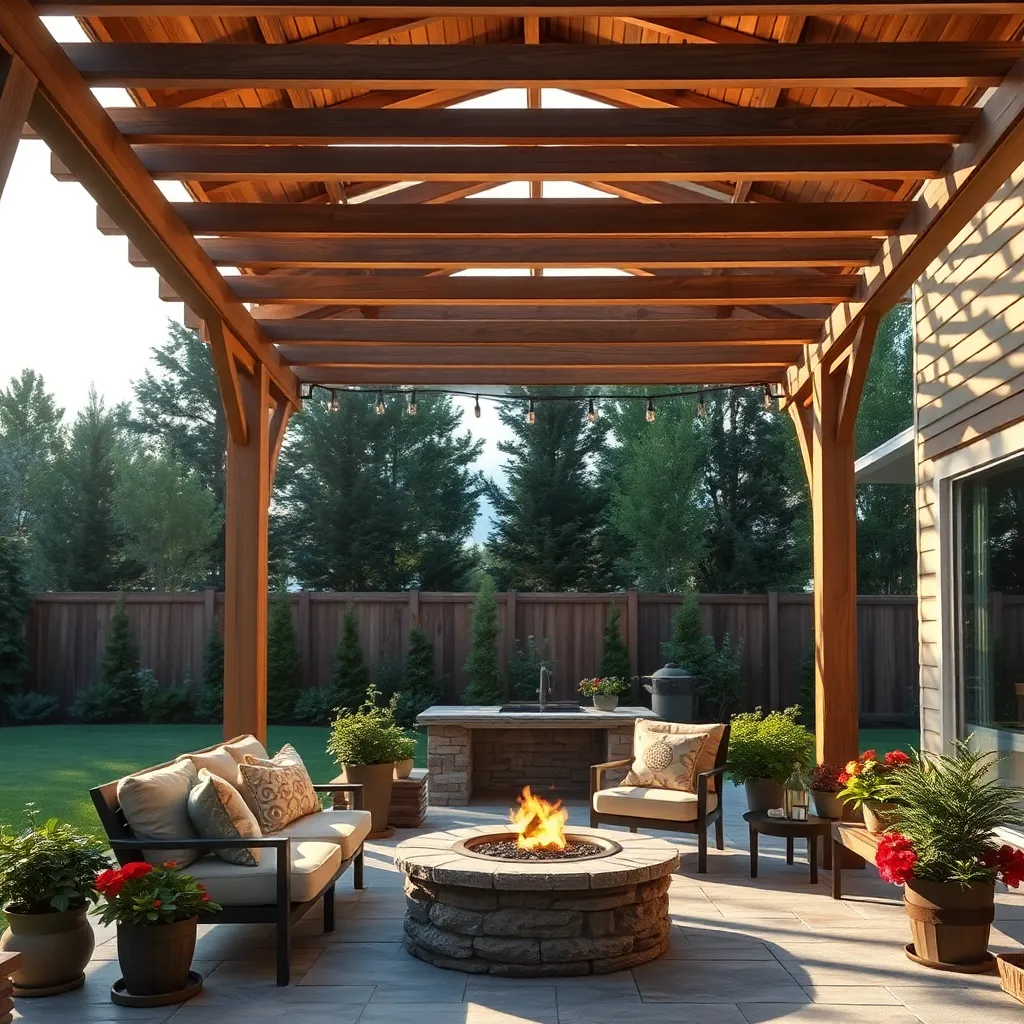
When designing your patio cover, consider the climate and intended use of the space. For warmer regions, a pergola with adjustable louvers can offer flexible shade and ventilation, while a solid roof might be more suitable for rain-prone areas. Choose materials that complement your home’s exterior; cedar or redwood are excellent for a natural look, while aluminum offers low maintenance and durability. Beginners can start with a simple canvas shade sail, which is easy to install and adjust based on sun patterns.
Advanced DIYers might opt for a more permanent solution like a wooden or metal structure. Ensure your design includes proper drainage and slope to prevent water pooling. When selecting dimensions, aim for a minimum height of 8 feet to ensure a spacious feel and accommodate any hanging elements like lights or plants. Consider adding built-in features such as lighting or a ceiling fan to enhance usability and comfort. By thoughtfully selecting your patio cover, you can create an inviting outdoor space that suits both your aesthetic preferences and functional needs.
Tools for Patio Cover Construction
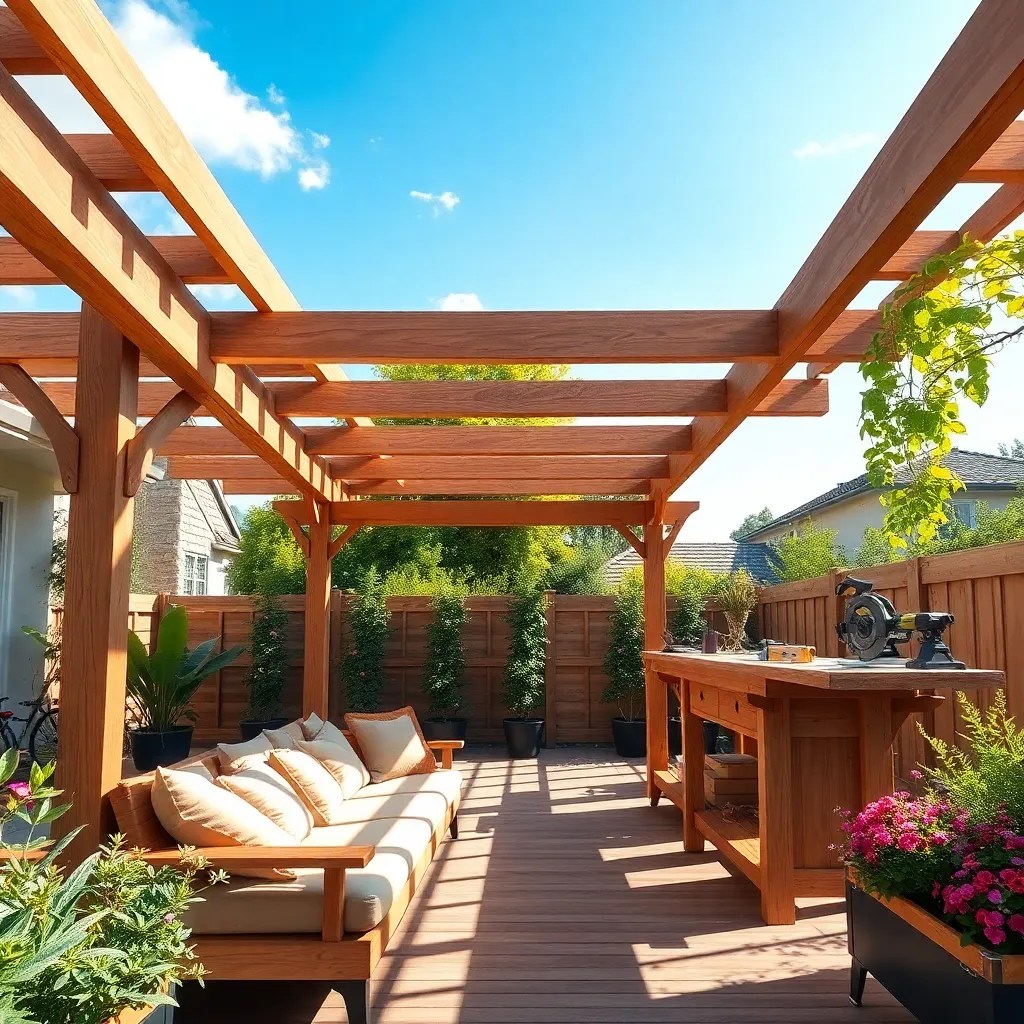
When constructing a patio cover, having the right tools is crucial for a successful project. Start with essential tools like a tape measure, level, and power drill to ensure your structure is both precise and sturdy. For cutting materials, a circular saw will help you achieve clean edges, especially when working with wood or metal. Consider investing in a miter saw if you plan on adding decorative trim or angled cuts, as this will enhance the aesthetic finish of your patio cover.
For a more advanced setup, a laser level can be invaluable for maintaining alignment across large spans. Safety gear is a must, so equip yourself with safety goggles, gloves, and a sturdy ladder to navigate your project safely. If you’re using materials like polycarbonate sheets or metal panels, tin snips or a jigsaw may be required for precise cuts.
- Ensure your toolbox includes a variety of screws and fasteners suited to the material you are working with.
- A chalk line can help you mark straight lines, ensuring your structure remains aligned throughout construction.
These tools will not only make your work easier but also enhance the quality and durability of your patio cover.
Wooden Pergola: A Classic Choice
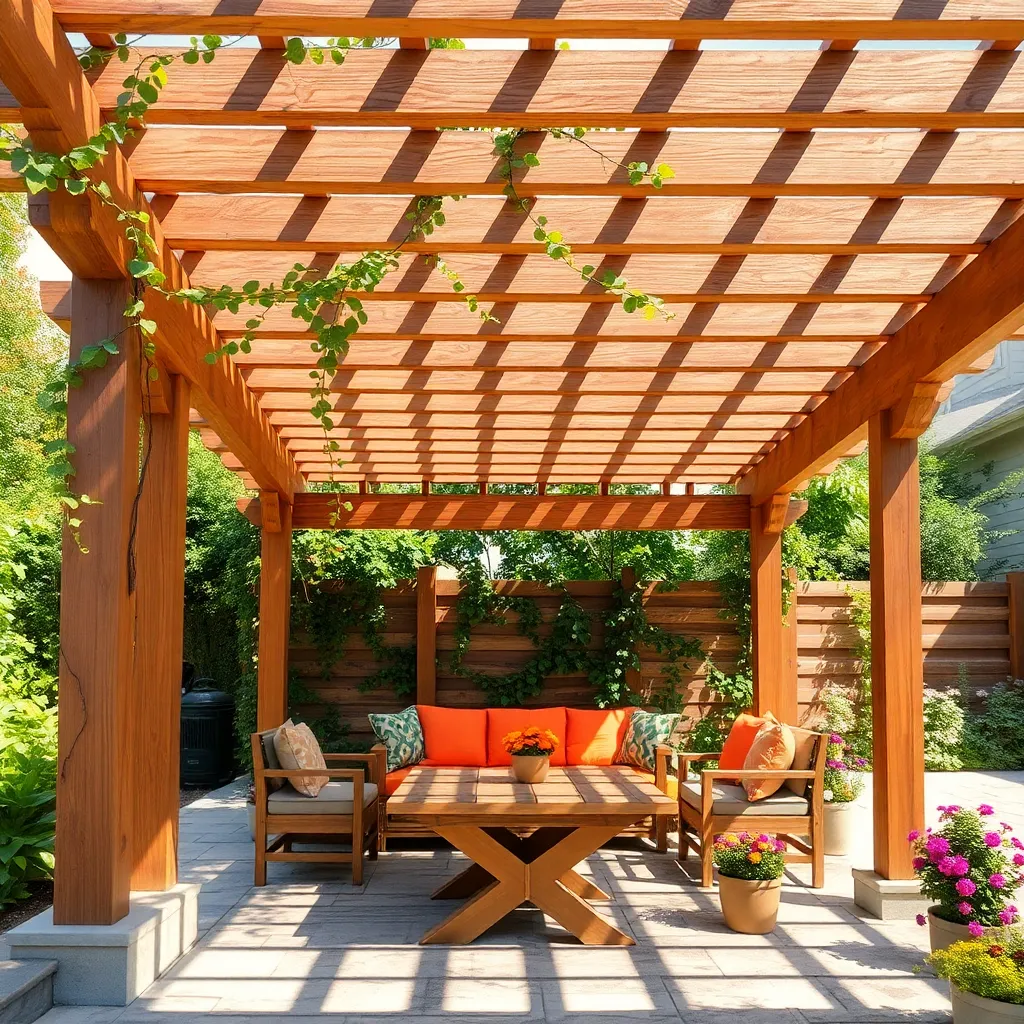
Choosing a wooden pergola is a classic way to enhance your backyard while providing partial shade and a defined outdoor space. Cedar and redwood are popular choices for their natural resistance to decay and insects, ensuring longevity with minimal maintenance. For beginners, start with a simple design using pre-cut lumber available at most hardware stores, and consider a basic square or rectangular shape to ease construction.
For a more customized look, incorporate design elements like lattice panels or climbing plants to add both shade and charm. Advanced builders can explore more intricate designs, such as curved beams or integrated lighting, to elevate the pergola’s aesthetic appeal. Anchor your structure securely using concrete footings to withstand various weather conditions, and always ensure the wood is treated for outdoor use to extend its life.
Shade Sails: Modern and Versatile
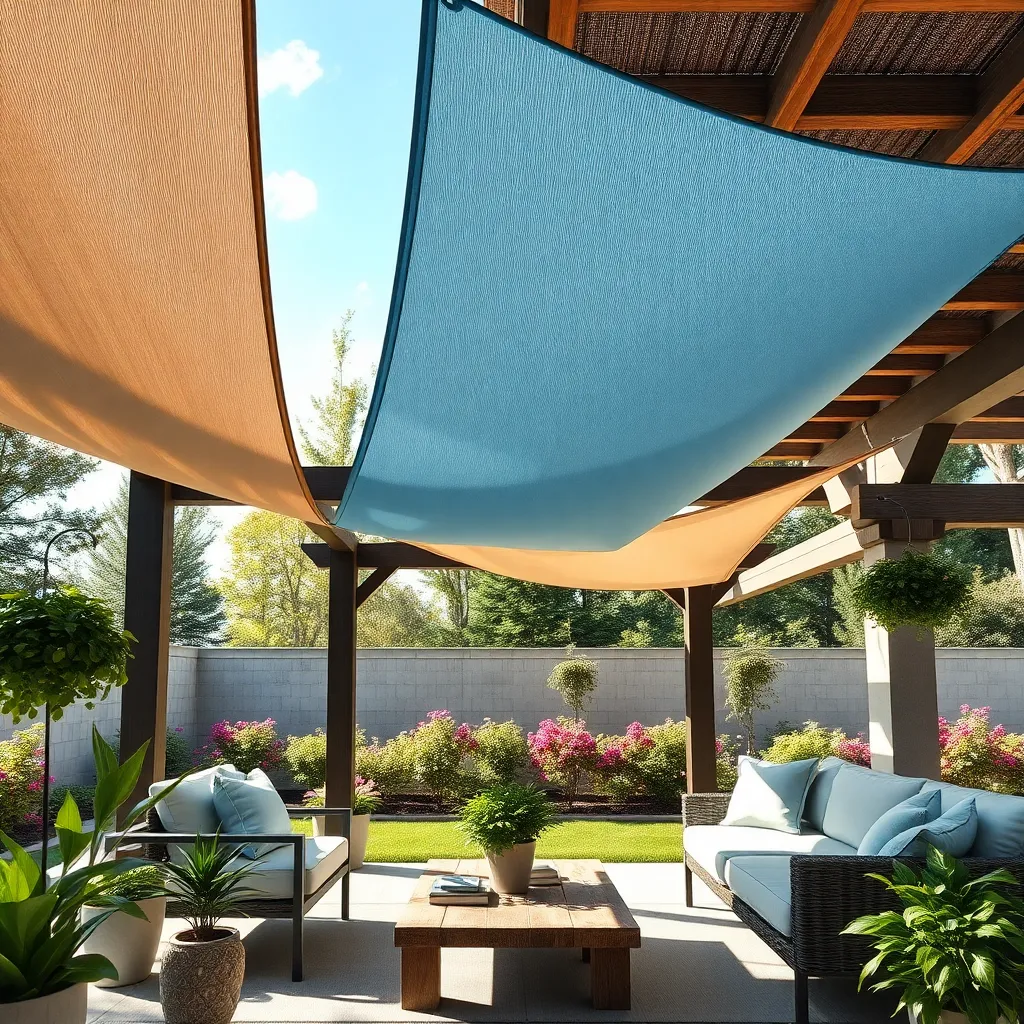
Shade sails offer a modern and versatile solution for creating a stylish patio cover in your backyard. These fabric structures are easy to install and come in various sizes and shapes, such as triangles or rectangles, allowing homeowners to customize their outdoor space creatively. When choosing materials, opt for UV-resistant fabrics to ensure durability and protection from the sun. For a basic setup, you’ll need sturdy posts or existing structures to anchor the sails, ensuring they are tensioned properly to prevent sagging.
For a more advanced installation, consider layering multiple shade sails at different angles to create a dynamic visual effect while maximizing coverage. This approach not only enhances aesthetics but also provides additional shade where it’s needed most. Ensure that all mounting points are secure, using stainless steel hardware to withstand weather conditions. Experiment with color to complement your garden’s palette or your home’s exterior, and be sure to measure precisely to achieve the perfect fit for your space. Whether you’re hosting a summer party or enjoying a quiet afternoon outdoors, shade sails can transform your patio into a comfortable and inviting retreat.
Retractable Awnings for Flexibility
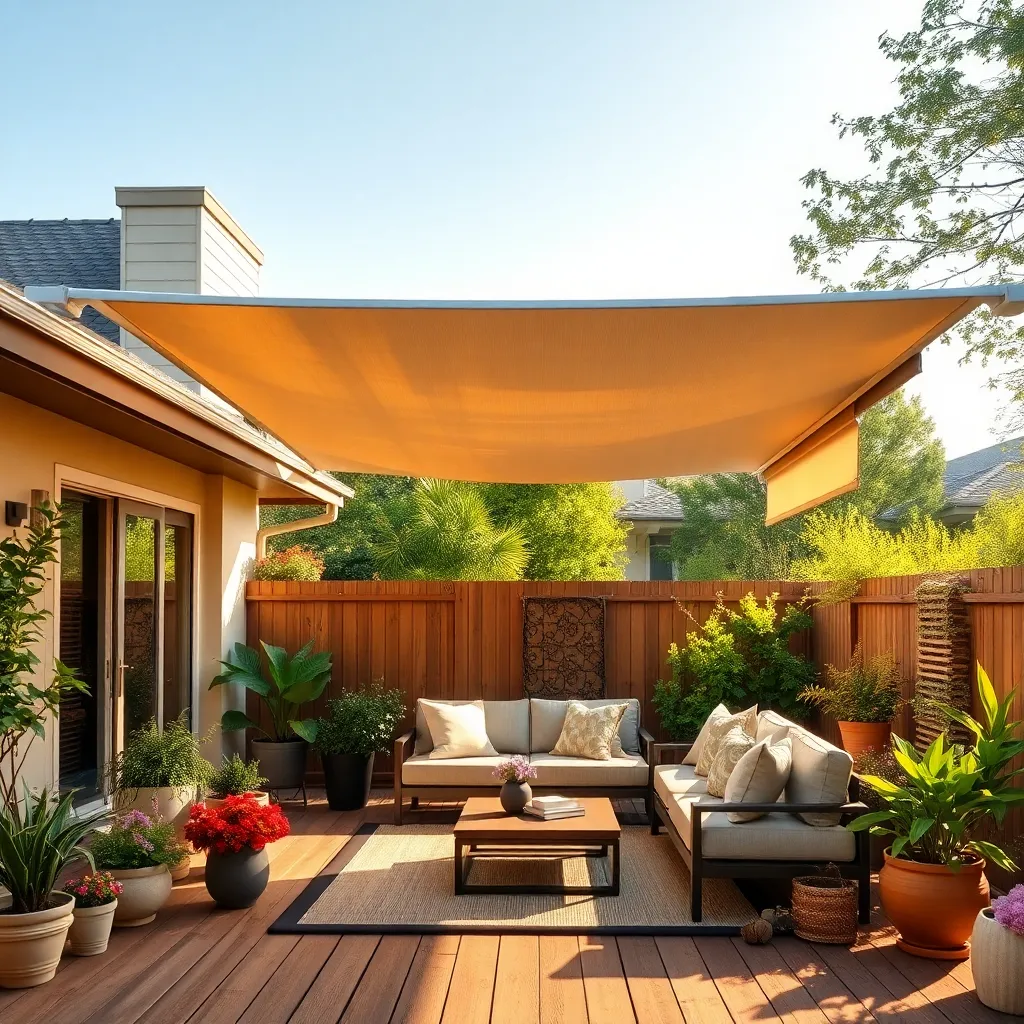
Retractable awnings offer incredible flexibility and control over your outdoor space, allowing you to enjoy sun or shade on demand. These awnings are perfect for homeowners who want a dynamic patio cover that can adapt to changing weather conditions. For beginners, consider starting with an easy-to-install manual model, which typically requires only a few tools and basic DIY skills. Opt for durable materials like acrylic fabrics and powder-coated aluminum frames to ensure longevity and resistance against the elements.
For those ready to take on a more advanced project, consider motorized retractable awnings with remote control or smart home integration. These add convenience and a modern touch to your patio. When planning your installation, ensure that the awning’s dimensions match your patio space, allowing at least 2 feet of overhang on each side for optimal coverage. Keep in mind that the angle of the awning can often be adjusted to provide the best shade and rain protection, enhancing its functionality throughout the seasons.
Incorporating Natural Elements Creatively
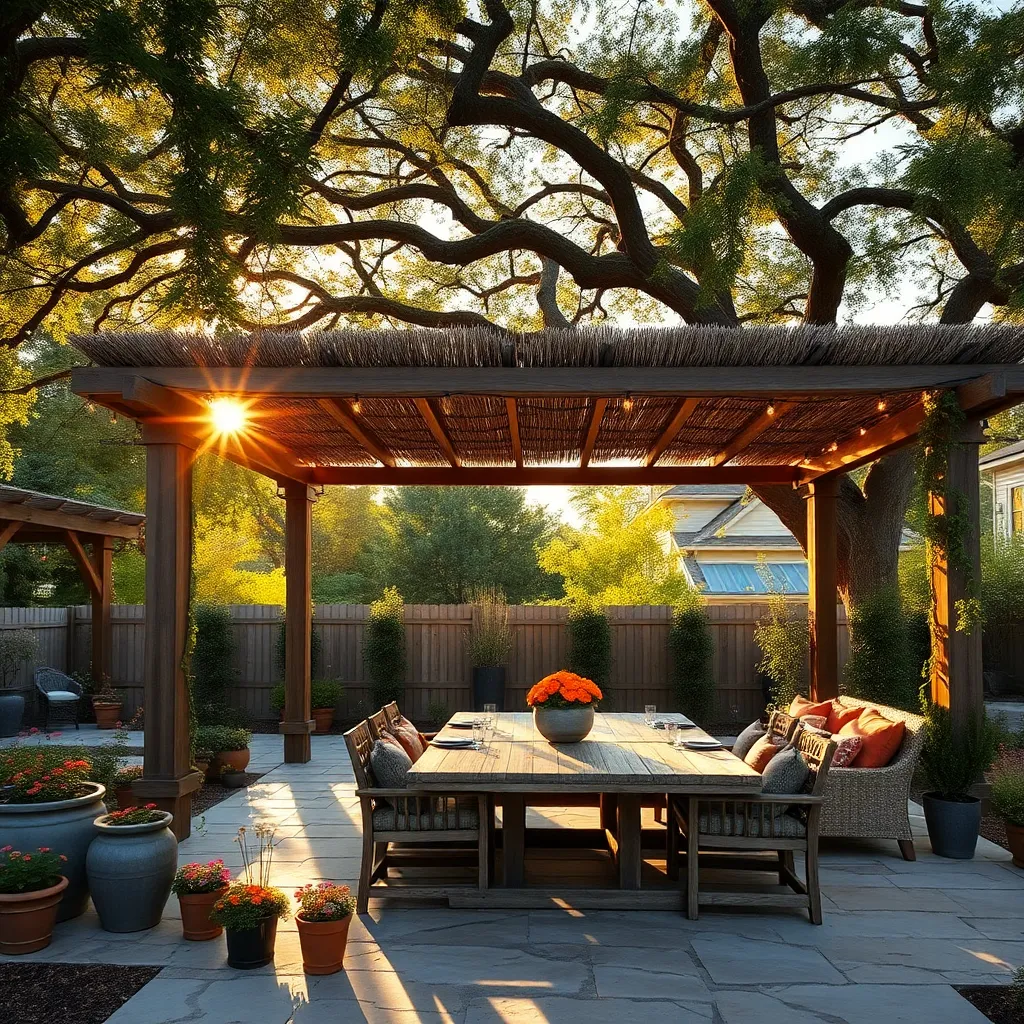
Inviting nature into your patio cover design is an excellent way to blend aesthetics with functionality. Consider using living plants as a canopy by installing a trellis or pergola and training climbing plants like wisteria or grapevines to grow overhead. This not only provides shade but also enhances the natural beauty of your outdoor space. For beginners, start with fast-growing, low-maintenance plants such as clematis or honeysuckle. Ensure your structure can support the weight of mature plants, using sturdy materials like treated wood or metal.
For a more advanced touch, incorporate elements like natural stone or wood into your patio cover design. Using reclaimed wood beams can add a rustic charm, while stone pillars can provide a solid and elegant foundation. Consider a combination of these materials to create a unique, personalized look. When constructing with natural elements, ensure all materials are weather-resistant, and apply sealant where necessary to prolong their lifespan.
- Use a mix of textures for visual interest.
- Choose materials that complement your home’s existing architecture.
By creatively integrating natural elements, you can craft a patio cover that is both beautiful and sustainable.
Metal Canopies: Durable and Stylish
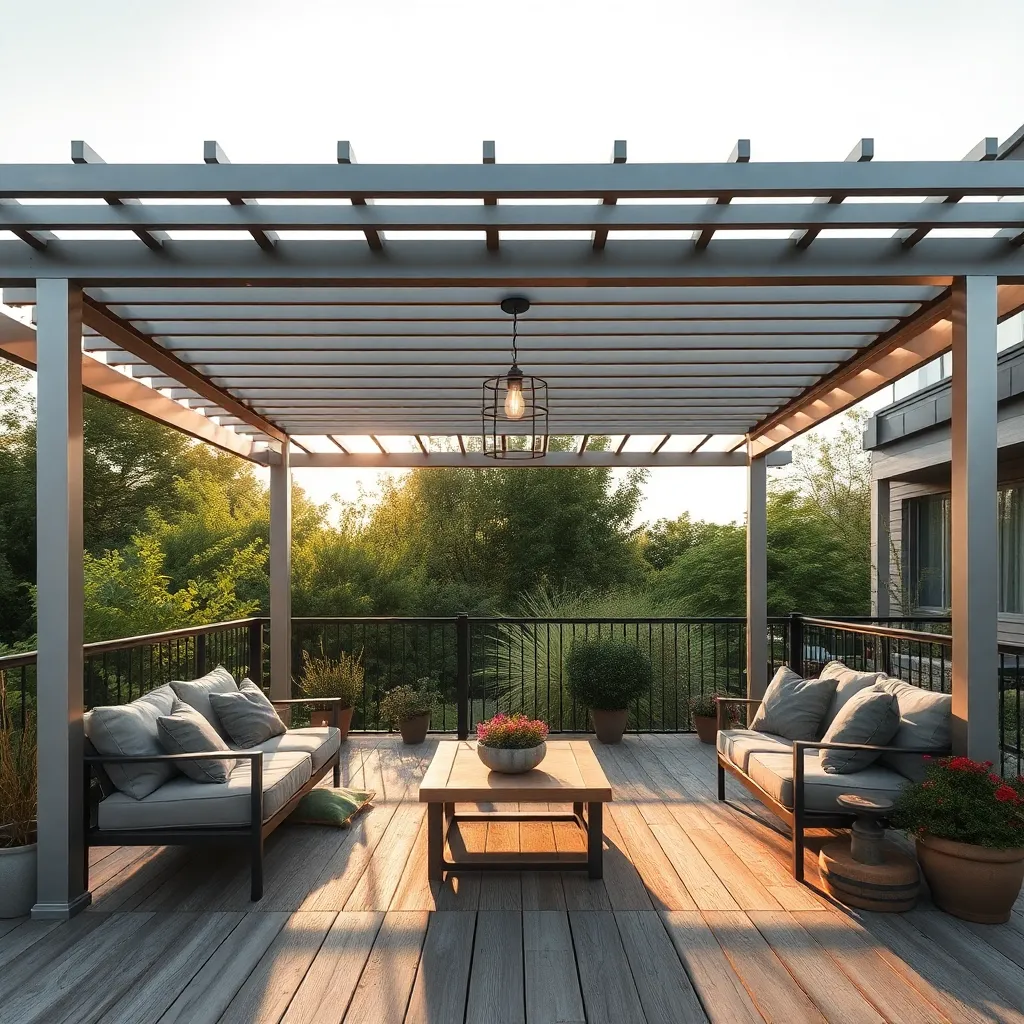
Metal canopies offer a durable and stylish option for your backyard, providing shelter while enhancing the aesthetic appeal of your outdoor space. Start by selecting materials such as galvanized steel or aluminum, known for their resistance to rust and ease of maintenance. These metals provide a sleek, modern look and can be shaped into various designs, from simple flat panels to more intricate, arched structures. For beginners, consider pre-fabricated kits that simplify installation with step-by-step instructions, ensuring you can enjoy your canopy with minimal hassle.
For those looking to add a personal touch, experiment with different design elements like adjustable louvers or decorative metalwork to create a unique focal point. Ensure your canopy is functional by considering the dimensions carefully; a typical size might start at 10×12 feet for ample coverage. Advanced gardeners can integrate lighting or climbing plants to enhance the ambiance and blend the metal structure with the natural environment. Whether you aim for a minimalist look or a more elaborate design, metal canopies offer a versatile solution that can adapt to various styles and preferences.
Bamboo Covers for Tropical Vibes
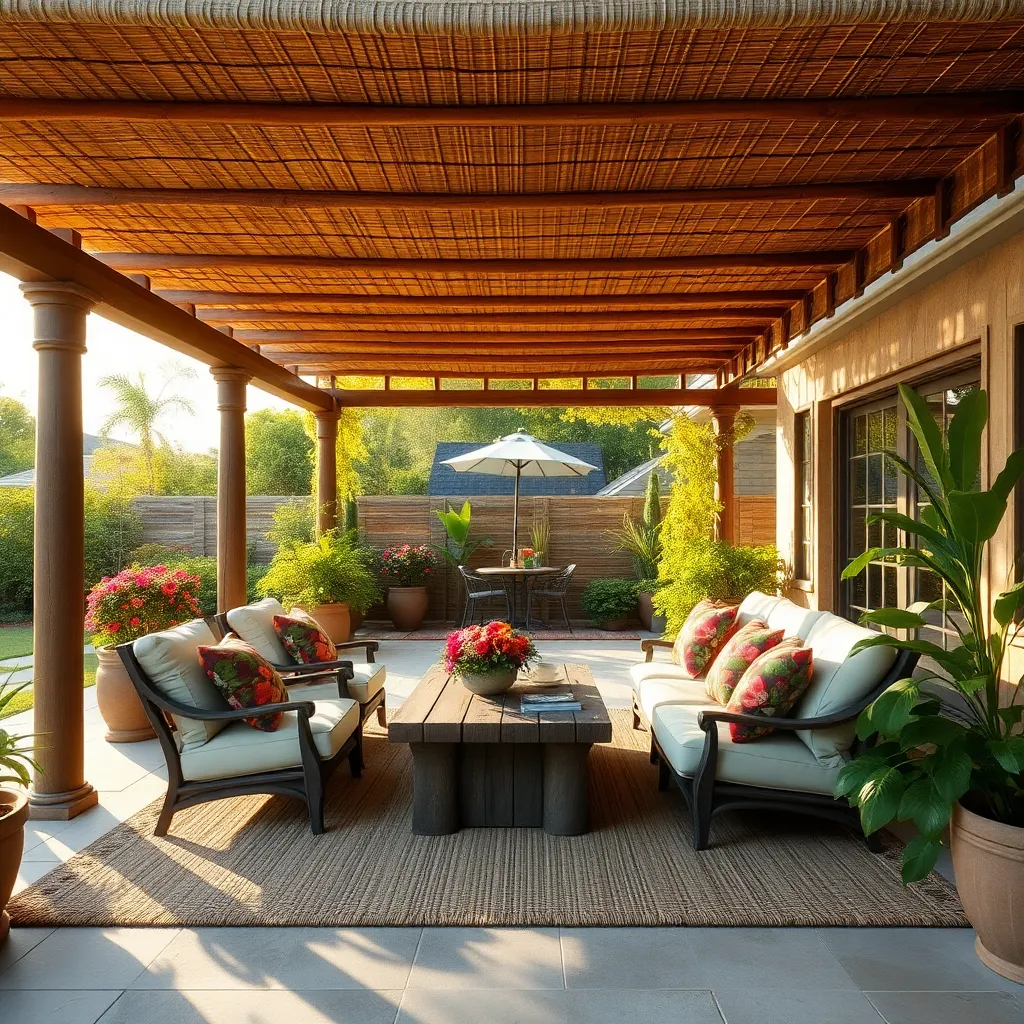
To infuse your backyard with a touch of tropical ambiance, consider installing a bamboo cover over your patio. Bamboo is not only visually appealing with its natural look, but it is also a highly sustainable material. Start by constructing a simple frame using weather-resistant wood, such as cedar or treated pine, to ensure durability. Then, attach bamboo fencing panels or poles across the top to create a shade cover. Use adjustable cable ties or galvanized wire to secure the bamboo, making installation both quick and adjustable.
When designing your bamboo cover, focus on creating a balance between shade and light. To achieve this, space the bamboo poles evenly or use a lattice pattern for a more decorative touch. For added flair, consider hanging string lights or lanterns beneath the cover to create a cozy atmosphere come evening. Additionally, applying a clear outdoor sealant to the bamboo can help protect it from the elements, extending its lifespan. This project is not only ideal for beginners due to its simplicity but also offers advanced customization options for experienced DIYers looking to personalize their outdoor space.
Budget-Friendly DIY Cover Solutions
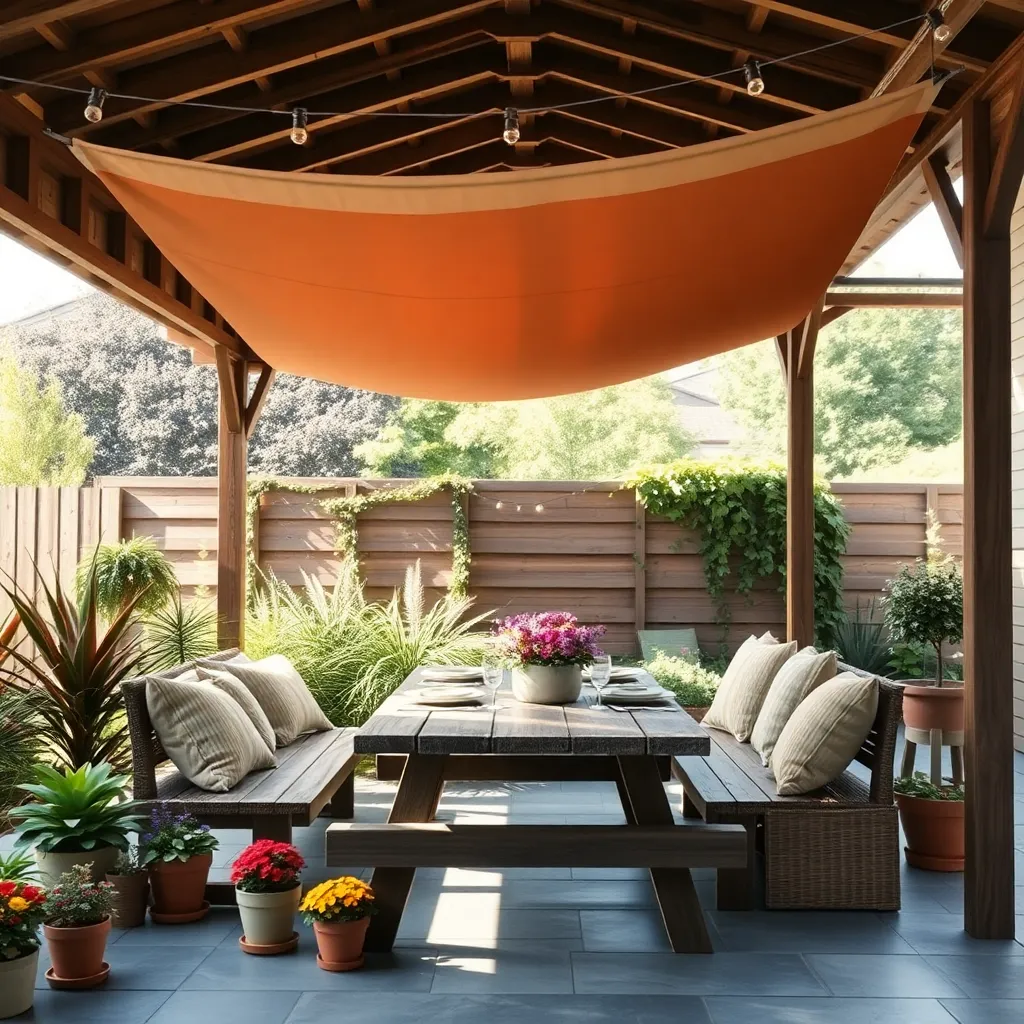
Transforming your backyard into a cozy retreat doesn’t have to break the bank. For a budget-friendly DIY patio cover, consider using a simple tarp or canvas sail. These materials are affordable and versatile, providing shade and protection from the elements. Secure the corners to nearby trees or use wooden posts for support, adjusting the height for optimal sun coverage. Opt for a neutral color to blend seamlessly with your garden or a vibrant hue for a pop of personality.
Another cost-effective solution is to repurpose old materials for a unique, eco-friendly cover. Try using reclaimed wood pallets to create a rustic pergola. This project requires basic woodworking skills, but the design can be as simple or as intricate as you like. Space the slats evenly for partial shade, or cover with a weatherproof fabric for full protection. Finish with a weather-resistant sealant to enhance durability, ensuring your patio cover lasts through the seasons.
Enhancing Your Patio with Lighting
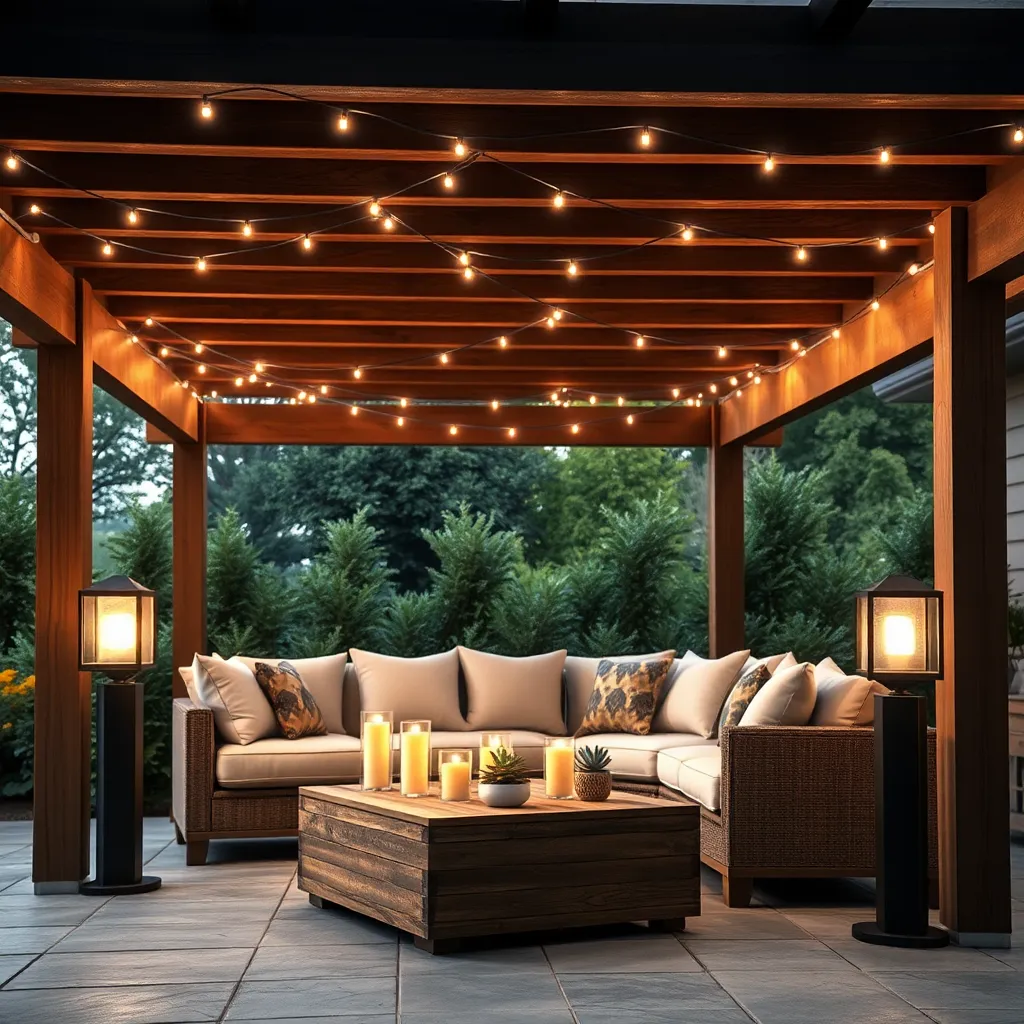
Enhancing your patio with lighting is a brilliant way to extend your outdoor enjoyment into the evening hours. Start with simple string lights—they’re easy to install and can be draped across beams or wrapped around posts for a cozy ambiance. For a more advanced touch, consider integrating solar-powered LED lights into your cover structure. These are eco-friendly and eliminate the need for wiring. Opt for warm white bulbs to create a welcoming atmosphere, and ensure your transformer is suitable for outdoor use if your setup requires one.
To add a design element with a practical purpose, install recessed lights into your patio cover for a sleek, modern look. Use weather-resistant fixtures to prevent damage from the elements, and space them evenly for balanced illumination. For those seeking a bit more flair, consider hanging lanterns or chandeliers that complement your patio theme. Remember to maintain a balance between aesthetics and functionality—good lighting should enhance the mood without overpowering it. With these tips, your patio can become a delightful retreat for evening gatherings.
Conclusion: Creating Beautiful Outdoor Spaces
In exploring the ’10 DIY Patio Covers for Your Backyard,’ we’ve uncovered fundamental relationship concepts that mirror the art of crafting a personal sanctuary. Each patio cover symbolizes a unique facet of relationship building: open communication, trust, mutual respect, shared goals, adaptability, patience, creativity, balance, compromise, and ongoing commitment. These foundational elements are akin to constructing a space where both partners can thrive together.
As a next step, choose one of these key concepts and discuss it with your partner to identify how it can enhance your relationship. For instance, you might explore new ways to communicate openly or establish shared goals to strengthen your bond.
To ensure these insights are at your fingertips whenever you need guidance, bookmark this article now. Doing so will allow you to revisit these essential principles and apply them as your relationship evolves.
Remember, just like your backyard oasis, a flourishing relationship requires ongoing care and dedication. By nurturing these elements, you’re not only building a resilient partnership but also setting the stage for a future filled with shared joy and success. Empower yourself today to create lasting relationship harmony.

